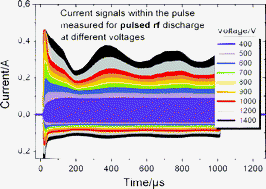Electrical properties of the µs pulsed glow discharge in a Grimm-type source: comparison of dc and rf modes†
Abstract
The electrical properties, in particular the U–I characteristics, current and voltage signal shapes within the pulse, are important parameters for the understanding of the processes taking place in the pulsed glow discharge (PGD). The electrical properties are also closely related to the analytical performance of the PGD such as sputtering rates, crater shapes and emission yields. Moreover, the dependence of the U–I plots on the density of the discharge gas can be used to estimate the gas temperature. This result is relevant for the analysis of thermally fragile samples. Nevertheless, there is a lack of PGD studies where the current and voltage signals are considered in detail. Therefore, this article is dedicated to the electrical properties of PGD. The influence of the PGD parameters (duty cycle and pulse duration) on the electrical properties is examined. The results highlight the optimum parameters for particular analytical applications. The question, whether direct current (dc) and radio frequency (rf) discharges behave similarly is also discussed and all experiments are performed for both modes. The comparative studies reveal strong similarities between dc and rf pulsed discharges.

- This article is part of the themed collection: Glow Discharge Spectroscopy

 Please wait while we load your content...
Please wait while we load your content...